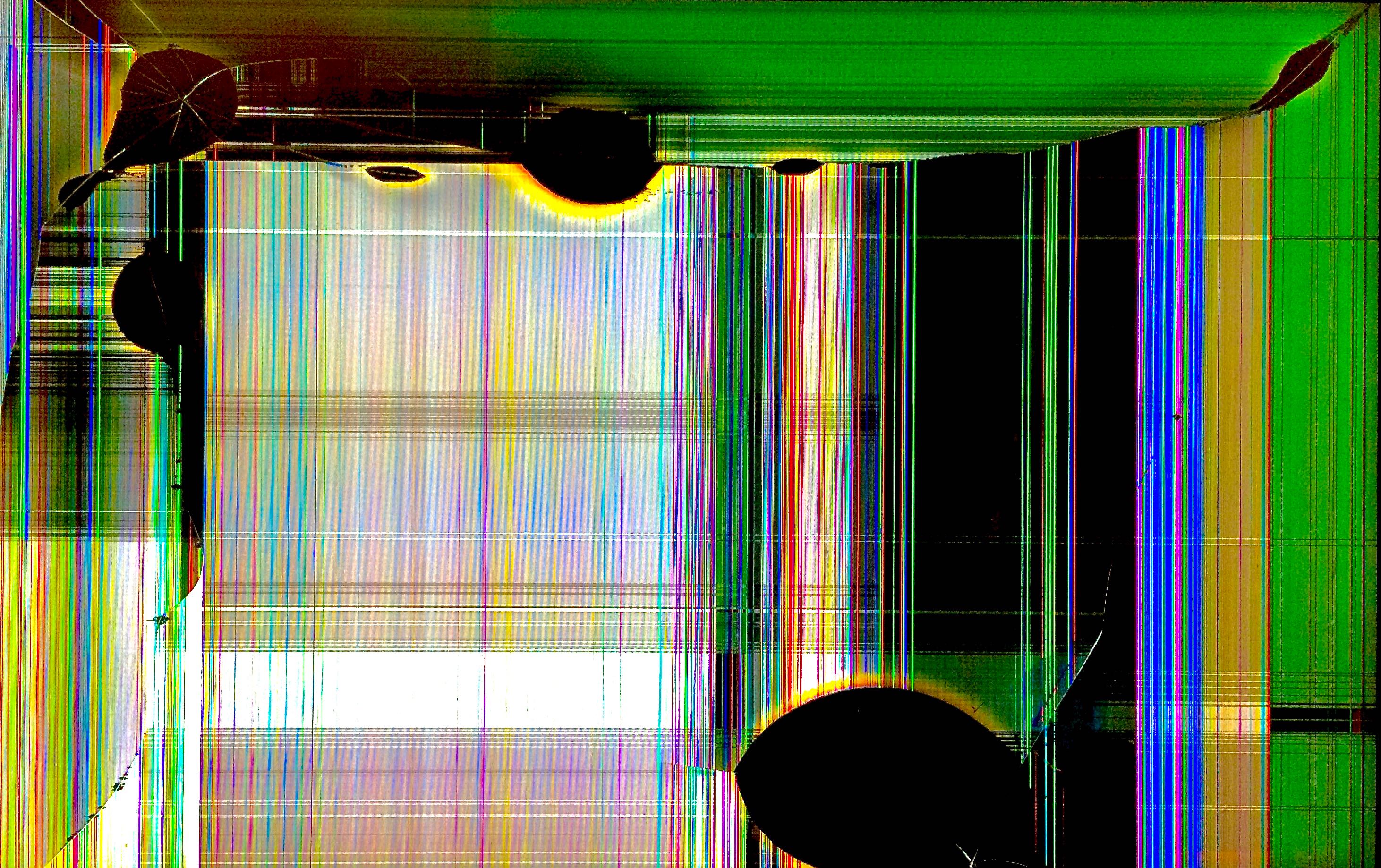Hello, and welcome to Monitors of Modern Art!
You can learn more about MOMA here,
browse our various collections, experience an
endless slideshow of our works, or look below for some
highlights of the gallery's best works.
(Warning: This site is not for mobile users browsing on data. Our images are large,
mostly uncompressed, and very data-intensive, so it is advised to view this website on a fast wi-fi
connection.)
This is one of this gallery's premier examples of stellar coloring, texturing, shading, and overall composition. The rough digital texture in the background allows for a uniquely graded style of gradient that the color choices only enhance; this shading style is used to give both an impression of depth and to imply how things are falling apart; especially when it transitions into a dithering fade as deep blackness consumes the area around it. The work's foreground is no less intense and detailed, its sharp and visceral shapes serving as a symbol of determination and resistance - those things hanging on in the midst of the calamity. There is a lot of potential symbolism to be found in this work.
This is an extremely simple but extremely heartwarming work which simply consists of a heart-shaped depression on a soft pink background.
A fairly early work, Warp is one of the gallery's first instances of this sort of rough texture, and this texture still remains a rarity. A very abstract work, yet one with a definite measure of feeling behind it.
This work has possibly the most interesting texture of any work in this gallery - it genuinely looks like rough paint, or a some type of fabric. In addition, its composition is very literal, making it an easy work to view and contemplate.
This work is angular and blocky in an interesting way, and contains a diverse palette of different colors that don't quite mesh but yet do not disrupt each other. It's almost like a broken machine that, yet, still works through force of careful foresight and good construction. This work is also the predecessor of a few later works that explore the "room" theme further, most notably Mystery Room and Maze Room.






